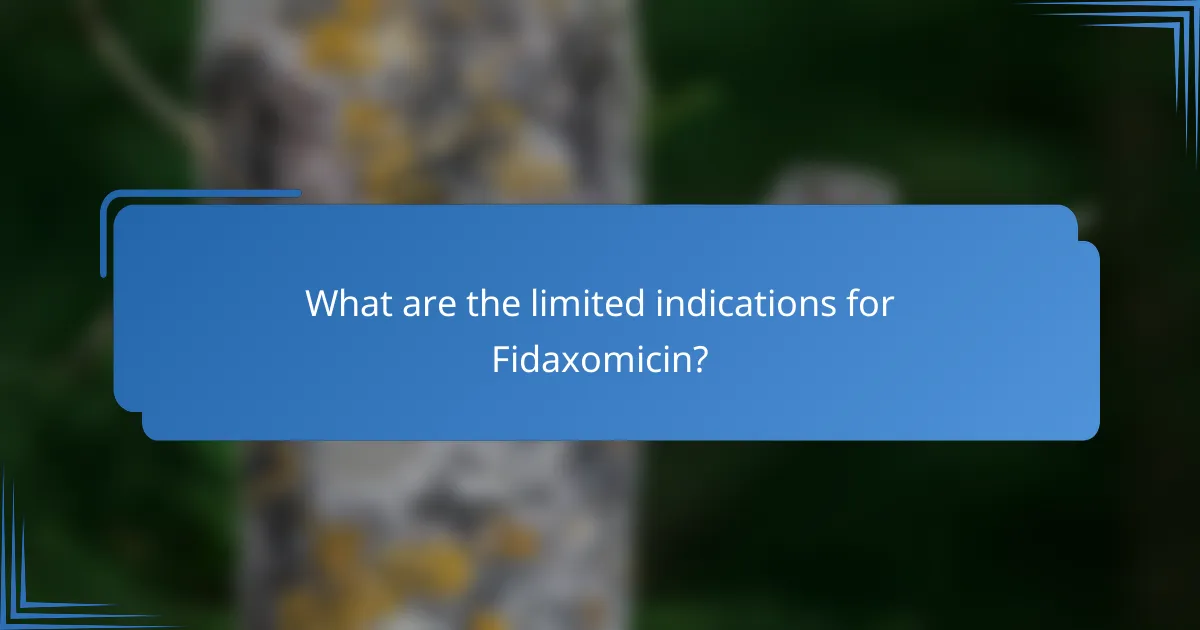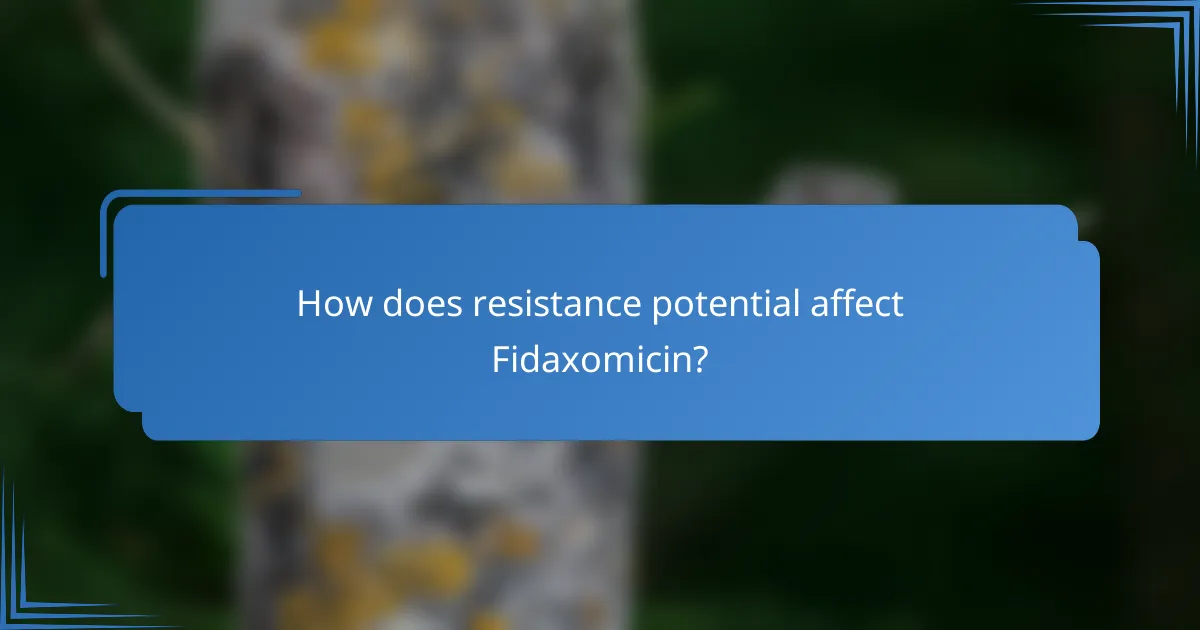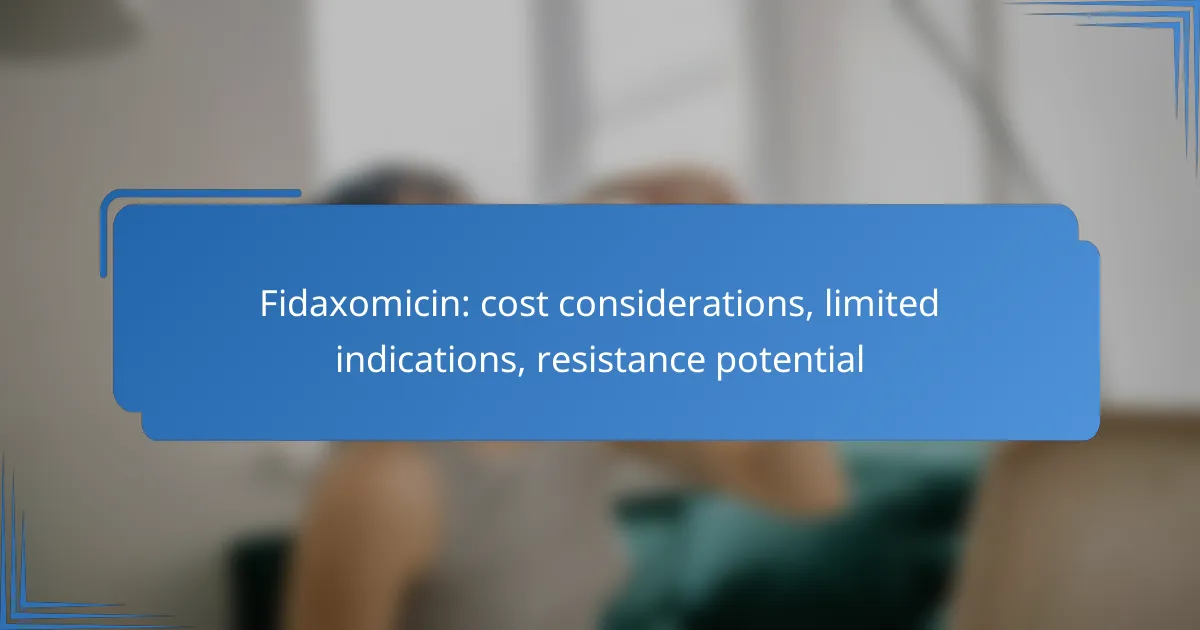Fidaxomicin is a specialized antibiotic primarily indicated for the treatment of Clostridioides difficile infection (CDI) in adults, with a typical treatment course costing between CAD 1,500 and CAD 2,000 in Canada. Its limited indications and relatively high price compared to other antibiotics can impact its accessibility. Additionally, while resistance to Fidaxomicin is generally low, monitoring this potential is essential for maximizing treatment efficacy and preventing failures.

What is the cost of Fidaxomicin in Canada?
The cost of Fidaxomicin in Canada typically ranges from CAD 1,500 to CAD 2,000 for a standard treatment course. This price can vary based on the pharmacy, location, and any applicable insurance coverage.
Average retail price
The average retail price for Fidaxomicin in Canada is generally around CAD 1,800 for a full treatment regimen. Prices may differ slightly between pharmacies, so it is advisable to shop around for the best deal.
Insurance coverage options
Many private insurance plans in Canada may cover Fidaxomicin, but coverage can vary significantly. Patients should check with their insurance provider to confirm if the medication is included in their formulary and what out-of-pocket expenses they might incur.
Discount programs available
Some pharmaceutical companies offer patient assistance programs that can help reduce the cost of Fidaxomicin for eligible patients. Additionally, certain pharmacies may provide discount cards or loyalty programs that can further lower the price.

What are the limited indications for Fidaxomicin?
Fidaxomicin is primarily indicated for the treatment of Clostridioides difficile infection (CDI) in adults. Its use is limited due to its specific targeting of this infection and its relatively high cost compared to other antibiotics.
Approved uses in Canada
In Canada, Fidaxomicin is approved for treating CDI in adults, particularly for patients with a history of recurrent infections. The drug is recognized for its efficacy in reducing recurrence rates compared to standard treatments, making it a valuable option for managing this specific condition.
However, its approval does not extend to other bacterial infections, which limits its overall utility in the broader antibiotic landscape. Prescribers should consider this limitation when evaluating treatment options for patients with infections outside of CDI.
Comparison with other antibiotics
Fidaxomicin is often compared to vancomycin, another common treatment for CDI. While both are effective, Fidaxomicin may offer advantages in reducing recurrence rates, which can be a significant concern for patients with CDI. However, it is generally more expensive, which can influence prescribing decisions.
When considering alternatives, healthcare providers should weigh the cost of Fidaxomicin against its benefits in preventing recurrence. For patients without a history of recurrent CDI, less expensive options like metronidazole may be preferred due to their lower cost and broader indications.

How does resistance potential affect Fidaxomicin?
Resistance potential is a significant factor when considering Fidaxomicin for treatment, as it can influence the drug’s effectiveness against Clostridioides difficile infections. While resistance is relatively low, understanding this aspect is crucial for ensuring optimal outcomes and minimizing treatment failures.
Mechanism of action
Fidaxomicin works by inhibiting bacterial RNA polymerase, which is essential for bacterial protein synthesis and growth. This mechanism specifically targets C. difficile, making it effective in treating infections caused by this pathogen. Unlike many antibiotics, Fidaxomicin has a narrow spectrum of activity, which helps preserve beneficial gut flora.
The selective action of Fidaxomicin reduces the likelihood of developing resistance compared to broader-spectrum antibiotics. This targeted approach is particularly important in managing recurrent infections, as it minimizes disruption to the microbiome.
Resistance rates in clinical studies
Clinical studies indicate that resistance rates to Fidaxomicin are low, typically reported in the single-digit percentages. This is a favorable outcome compared to other antibiotics used for C. difficile, which may show higher resistance rates. Continuous monitoring of resistance patterns is essential to ensure the drug remains effective.
In practice, the low resistance potential of Fidaxomicin supports its use as a first-line treatment for C. difficile infections, especially in patients with a history of recurrence. However, healthcare providers should remain vigilant and consider susceptibility testing in cases of treatment failure or recurrent infections.

What are the alternatives to Fidaxomicin?
Alternatives to Fidaxomicin include Vancomycin and Metronidazole, both of which are commonly used to treat Clostridioides difficile infections (CDI). Each has its own mechanism of action, effectiveness, and potential side effects that should be considered when choosing a treatment option.
Vancomycin
Vancomycin is an antibiotic that works by inhibiting cell wall synthesis in bacteria, making it effective against gram-positive organisms, including C. difficile. It is typically administered orally for CDI and is often considered when patients do not respond to Metronidazole or have severe disease.
In terms of cost, Vancomycin can be more expensive than Metronidazole but may be necessary for certain patients. It is important to monitor for potential side effects, such as nephrotoxicity, particularly in patients with pre-existing kidney issues.
Metronidazole
Metronidazole is an antibiotic that disrupts DNA synthesis in anaerobic bacteria and protozoa, making it effective for treating mild to moderate CDI. It is typically the first-line treatment for initial episodes of C. difficile infection due to its lower cost compared to other options.
While Metronidazole is generally well-tolerated, it can cause side effects such as gastrointestinal disturbances and, in rare cases, peripheral neuropathy with prolonged use. It is crucial to evaluate the patient’s response to treatment and consider switching to Vancomycin if symptoms persist or worsen.

What factors influence the choice of Fidaxomicin?
The choice of Fidaxomicin is influenced by patient health conditions, cost considerations, and the potential for resistance. Understanding these factors helps healthcare providers determine the appropriateness of this antibiotic for treating Clostridioides difficile infections.
Patient health conditions
Fidaxomicin is primarily indicated for patients with Clostridioides difficile infections, particularly those who may not respond well to standard treatments. It is often considered for individuals with recurrent infections or those who have underlying health issues, such as immunocompromised states or severe comorbidities.
Healthcare providers should evaluate the patient’s overall health status, including liver function and renal impairment, as these can affect drug metabolism and efficacy. Additionally, the patient’s history of antibiotic use may influence the likelihood of treatment success.
Cost considerations
The cost of Fidaxomicin can be significantly higher than other treatment options, such as vancomycin. In the United States, the price may range from several hundred to over a thousand dollars for a full course of treatment, which can be a barrier for some patients.
Insurance coverage varies, and patients should check their plans to understand out-of-pocket expenses. Healthcare providers may need to consider alternative therapies if cost is a major concern, especially for patients without adequate insurance coverage.

What are the future trends in Fidaxomicin usage?
Future trends in Fidaxomicin usage are likely to focus on expanding its applications beyond current indications, driven by ongoing research into its efficacy and potential new uses. As antibiotic resistance becomes a growing concern, understanding the resistance potential of Fidaxomicin will also shape its future role in treatment protocols.
Emerging research on efficacy
Recent studies have indicated that Fidaxomicin may be more effective than traditional antibiotics for certain infections, particularly those caused by Clostridioides difficile. Research is exploring its impact on recurrence rates, suggesting that it may reduce the likelihood of reinfection compared to other treatments.
Clinical trials are ongoing to assess its efficacy in various patient populations, including those with recurrent infections or those who are immunocompromised. The results of these studies could lead to updated guidelines and increased usage in specific scenarios.
Potential new indications
There is growing interest in the potential for Fidaxomicin to treat infections beyond C. difficile, such as those caused by other resistant bacteria. Investigations are underway to evaluate its effectiveness against pathogens like Staphylococcus aureus and certain Gram-negative bacteria.
If future research supports these new indications, healthcare providers may consider Fidaxomicin as a first-line option for a broader range of infections, especially in regions facing high rates of antibiotic resistance. This shift could significantly alter treatment protocols and improve patient outcomes.
